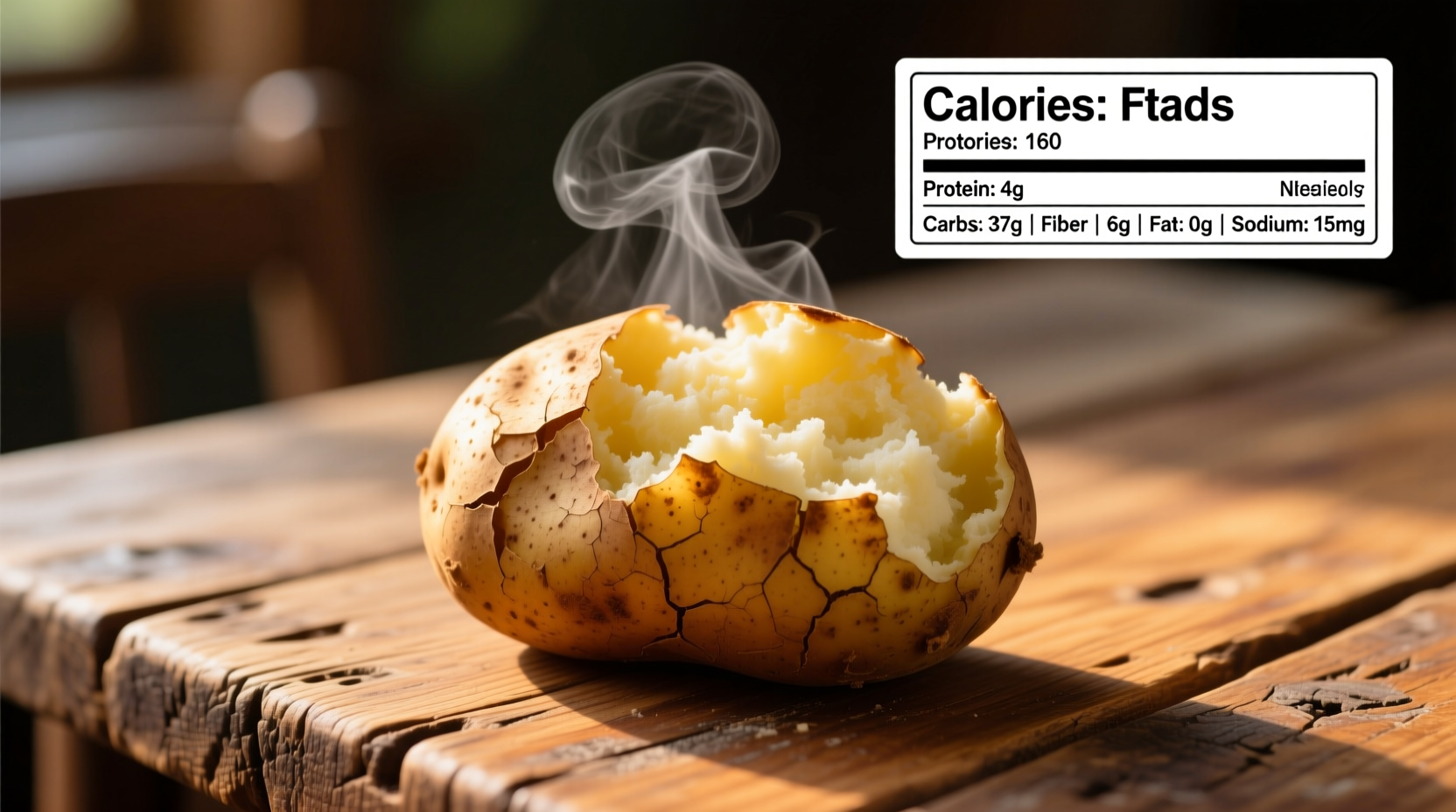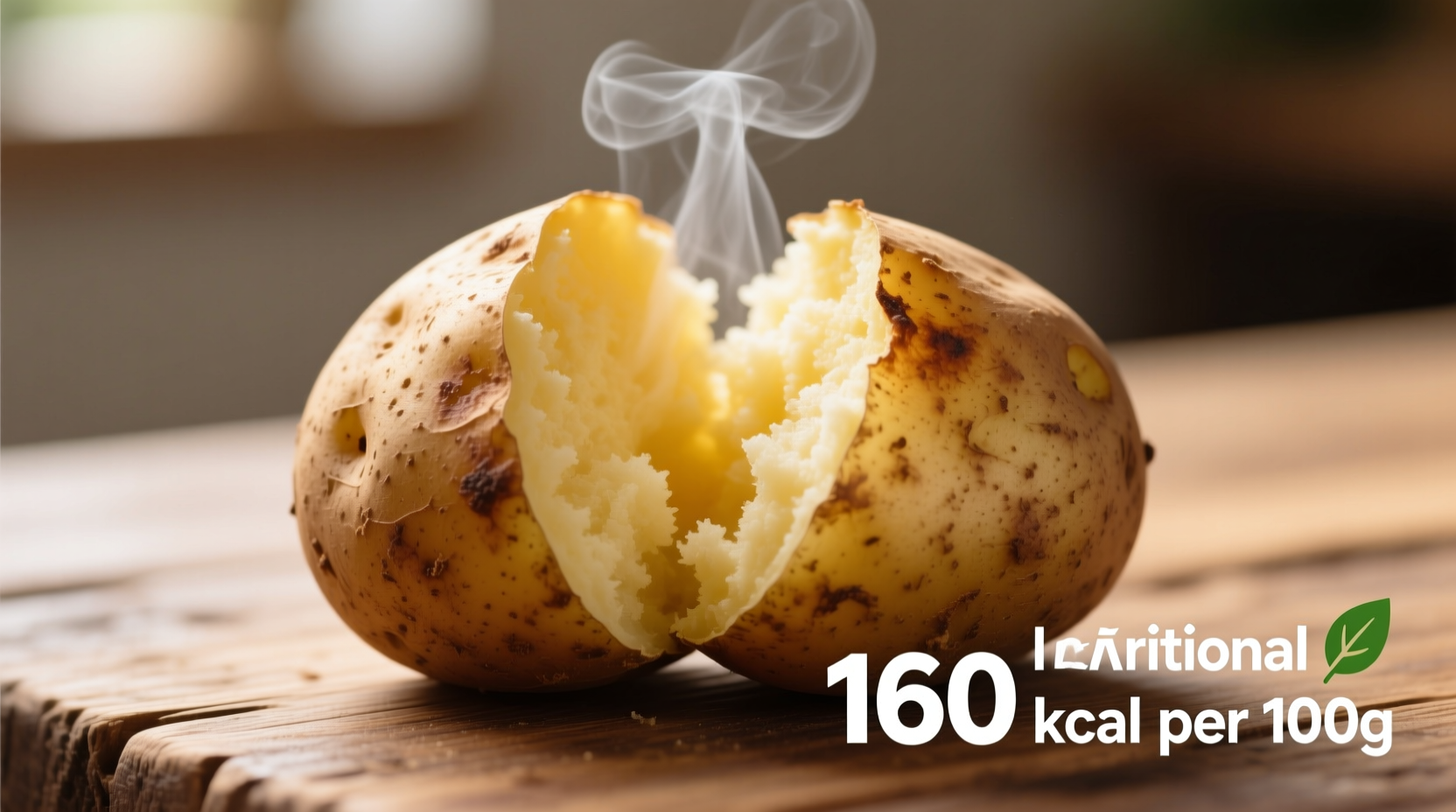Curious about Idaho potato calories for meal planning or dietary tracking? You've landed in the right place. Whether you're counting calories for weight management, managing blood sugar, or simply making informed food choices, understanding the exact nutritional value of this staple vegetable matters. In this guide, you'll get science-backed facts about Idaho potato nutrition, how preparation methods affect calorie content, and practical tips for incorporating them into a healthy diet.
Why Idaho Potatoes Stand Out Nutritionally
Idaho potatoes, primarily Russet varieties, have distinct nutritional characteristics compared to other potato types. Their thick skin and fluffy interior create a unique nutritional profile that makes them popular among both professional chefs and home cooks. The specific growing conditions in Idaho's volcanic soil contribute to their higher solid content and lower moisture compared to many other potato varieties.
| Potato Type | Calories (per 148g) | Carbohydrates | Fiber | Notable Characteristics |
|---|---|---|---|---|
| Idaho Russet | 110 | 26g | 2.5g | Higher starch content, fluffy texture when cooked |
| Red Potato | 100 | 23g | 2.0g | Waxy texture, thinner skin, slightly lower carbs |
| Sweet Potato | 103 | 24g | 3.0g | Higher vitamin A, different carbohydrate composition |
| Yukon Gold | 105 | 24g | 2.0g | Buttery flavor, medium starch content |
This nutritional comparison shows that while calorie counts are similar across potato varieties, Idaho Russets have slightly higher carbohydrate content due to their starch composition. According to the USDA FoodData Central database, this difference stems from Idaho's specific growing conditions that produce potatoes with higher dry matter content.
How Preparation Changes Idaho Potato Calories
What you do with your Idaho potato dramatically affects its final calorie count. The base nutritional information applies to raw or simply baked/boiled potatoes without added ingredients. Here's how common preparation methods impact the calorie profile:
- Plain baked Idaho potato: 110 calories for medium potato (no additions)
- Boiled Idaho potato: Approximately 100 calories (some nutrients leach into water)
- Mashed with milk and butter: 180-220 calories (varies by added ingredients)
- French fries (homemade): 365 calories per medium potato (oil absorption)
- Air-fried with minimal oil: 130-150 calories

Idaho Potato Nutrition Timeline: From Farm to Table
Understanding how potato nutritional science has evolved helps put current information in context:
- 1950s-1970s: Early USDA nutrient databases established basic potato nutrition facts
- 1980s: Research identified resistant starch formation when potatoes cool after cooking
- 1995: USDA standardized potato serving sizes for nutritional labeling
- 2000s: Studies revealed the glycemic index variability based on preparation methods
- 2010s: Modern analysis techniques provided detailed micronutrient profiles
- 2020: USDA FoodData Central updated comprehensive nutrient database with precise measurements
This evolution in nutritional understanding explains why older sources might cite slightly different calorie counts. Modern analytical methods provide more precise measurements of Idaho potato nutrition, which is why current USDA data shows 110 calories for a medium potato rather than the previously cited 100 calories.
Practical Portion Guidance for Healthy Eating
When incorporating Idaho potatoes into your diet, understanding proper portions prevents unintentional calorie overconsumption. A standard serving equals:
- One medium potato (5.3 ounces or 148 grams)
- One cup of diced or sliced potatoes
- Half cup of mashed potatoes
For those monitoring carbohydrate intake, remember that one serving contains approximately 30g of total carbohydrates. The fiber content (2.5g per medium potato) helps moderate blood sugar response compared to refined carbohydrates. Pairing potatoes with protein and healthy fats further reduces the glycemic impact.
Context Matters: When Idaho Potato Calories Fit Your Goals
Idaho potatoes work well in various dietary approaches, but context determines their suitability:
- Active individuals: Excellent carbohydrate source for energy replenishment
- Weight management: Best prepared simply (baked/boiled) with portion control
- Blood sugar concerns: Consume with skin, cooled after cooking, and paired with protein
- Low-carb diets: May exceed daily carb limits depending on strictness of regimen
The key limitation to recognize is that Idaho potatoes are primarily a carbohydrate source. While nutrient-dense compared to many refined carbs, they shouldn't replace non-starchy vegetables in diets requiring strict carbohydrate limitation. The glycemic index ranges from 54-111 depending on preparation method, with cooled potatoes showing lower glycemic response due to increased resistant starch.
Maximizing Nutritional Value: Smart Preparation Tips
You can enhance the nutritional profile of Idaho potatoes through smart preparation techniques:
- Leave the skin on to retain fiber and nutrients (nearly half the fiber is in the skin)
- Cool cooked potatoes to increase resistant starch content by up to 30%
- Use minimal added fats—try roasted potatoes with olive oil spray instead of deep frying
- Pair with protein sources like grilled chicken or fish for balanced meals
- Avoid sugary toppings that dramatically increase calorie density
Research published in the Journal of Nutrition and Metabolism confirms that cooling potatoes after cooking transforms some digestible starch into resistant starch, which functions more like fiber in the body. This simple technique can reduce the glycemic impact by approximately 25-30% while adding gut health benefits.











 浙公网安备
33010002000092号
浙公网安备
33010002000092号 浙B2-20120091-4
浙B2-20120091-4